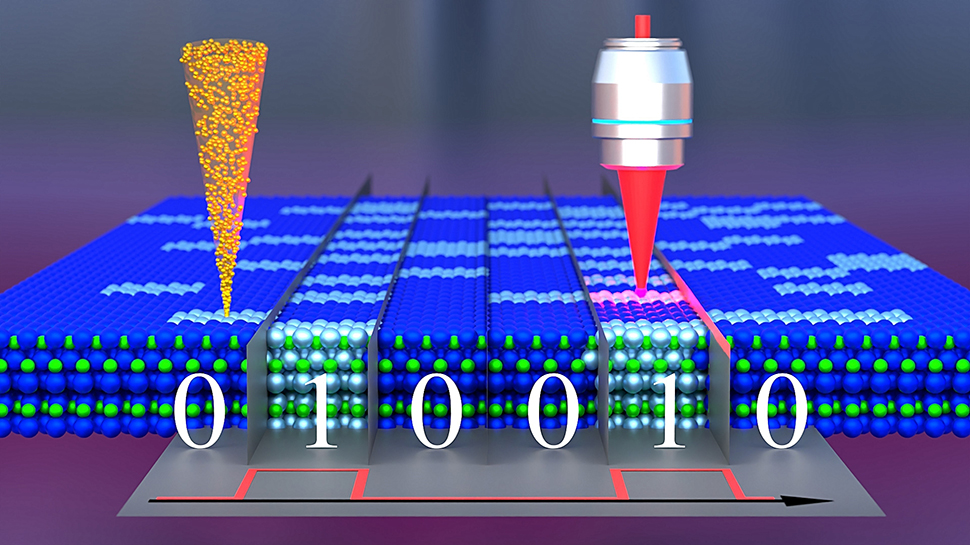Researchers have used lasers on a material used in nuclear fuel to create a quasi-eternal data storage media — super-hard silicon carbide DVD-like discs could have a capacity of 677GB
New storage concept uses atomic-scale defects

The daily creation of data is soaring, with the last two years alone have reportedly generated 90% of the world's data, with daily estimates reaching 330 million terabytes. Traditional storage media, however, have a limited lifespan.
Researchers at the Helmholtz-Zentrum Dresden-Rossendorf (HZDR) say they have employed lasers on silicon carbide, a material used in nuclear fuel, to develop a new form of high-capacity media that could potentially revolutionize the way we store data.
The team, headed by Dr. Georgy Astakhov from the Institute of Ion Beam Physics and Materials Research at HZDR, says the solution to the problem is to create a new long-term data storage concept using atomic-scale defects in silicon carbide. These defects, created by a focused beam of protons or helium ions, offer high spatial resolution, fast writing speed, and low energy consumption for storing a single bit.
Overcoming existing limitations
The HZDR team's method overcomes the limitations of current data storage solutions by using 4D encoding schemes. This involves controlling the lateral position and depth as well as the number of defects, enabling data to be read optically through photoluminescence. The areal storage density can be further improved using focused electron-beam excitation.
The researchers believe that the data stored in these silicon carbide disks could last for generations, depending on environmental conditions. “The temperature-dependent deactivation of these defects suggests a retention time minimum over a few generations under ambient conditions,” says Astakhov.
With near-infrared laser excitation, modern encoding techniques, and multi-layer data storage, the team expects to achieve a storage density equivalent to Blu-ray discs. If electron-beam excitation is used instead of optical excitation for data read-out, the storage density could match the current record for prototype magnetic tapes, but with a longer storage time and lower energy consumption.
This breakthrough research, which is not limited to silicon carbide and can be extended to other materials with optically active defects, potentially represents a significant step towards meeting the challenging demands of data storage.
Are you a pro? Subscribe to our newsletter
Sign up to the TechRadar Pro newsletter to get all the top news, opinion, features and guidance your business needs to succeed!
More from TechRadar Pro

Wayne Williams is a freelancer writing news for TechRadar Pro. He has been writing about computers, technology, and the web for 30 years. In that time he wrote for most of the UK’s PC magazines, and launched, edited and published a number of them too.